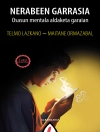This book creates a platform for music educators to share their experience and expertise in creative music teaching and learning with the international community. It presents research studies and practices that are original and representative of music education in the Japanese, Asian and international communities. It also collects substantial literature on music education research in Japan and other Asian societies, enabling English-speaking readers to access excellent research and practical experiences in non-English societies.
Table des matières
Part 1 Everyday Creativity in Music Education.- 1 Creativity and Music Education: A State of Art reflection.- 2 Learner agency in musical creative process and learning.- 3 Soundscape, sound education and the grain of the music: Experiencing the luminousness of music being what it is.- 4 Exploring children’s creative musical conversations using the tambourine.- 5 Discovering young children’s musical creativity in their everyday life.- 6 Ideas of creative music education.- Part 2 Creative Music Education with Social-cultural and Historical/Traditional Perspectives.- 7 Creativity and embodiment in pre-modern Japan and Twenty-first century (North) America.- 8 Creativity in music education from 1890s to 1930s in Japan.- 9 Rethinking Takemitsu through creative music activities: Application of the materials in his piano music.- 10 Understanding and creating music.- 11 Facilitation-based distributed creativity: The Inari chorus performance at the Itoshima international art festival.- 12 Creativity, change in music culture, and what children’s song should be.- Part 3 Reviews of Practice and Research in Music Education.- 13 The challenge of teaching creativity in school music education in Mainland China.- 14 Do you like music as the subject at school? Creativity in self-regulated learning and motivation in music education.- 15 Teaching strategies, knowledge, higher-order thinking skills and creative musical product in music improvisation.- 16 Creativity in the Japanese national curriculum for music.- 17 Developing in musical performance: An analysis of famous musicians’ autobiographies.- 18 Teaching music in the early childhood classroom for convergent creativity: Views from metasynthesis.- 19 Creativity in Music Education: moving forward.
A propos de l’auteur
TSUBONOU Yukiko is a Professor at Kaich International University. From 2005 to 2008 she was the President of the Japanese Music Education Society, and from 2005 to 2007 she was a member of the Education Committee of the Ministry of Education, Culture, Sports, Science and Technology. She is currently the Director of the Institute of Creativity in Music Education(ICME), as well as the chief editor of the International Journal of Creativity in Music Education (JCME). In addition, she has written papers/books, and translated English books about creative music activity.
TAN Ai-Girl is a member of the faculty at the Nanyang Technological University, Singapore. She was a Visiting Professor at the Department of Psychology, University of Munich, Germany sponsored by the German Academic Exchange Service, and at the Department of Asian Studies, Kaisai Gaidai University, Osaka, Japan. Currently she is the program leader of higher degree (Master and Ph.D.) Department of Early Childhood and Special Education. Her research interests include critical making and creativity, play and strength-based education.
OIE Mayumi is a Professor and Head of the Teacher Education program at Tokyo Woman’s Christian University, Japan. Her main research interests are the relationship between motivation and creativity in the transition from elementary school to junior high school. Her English publications include:“
Self-Regulated Learning and Creativity as Related to Age and Gender in the transition from Elementary to Junior High School” in A. G. Tan(Ed.), Creativity, Talent and Excellence.(Springer Verlag,2013)












